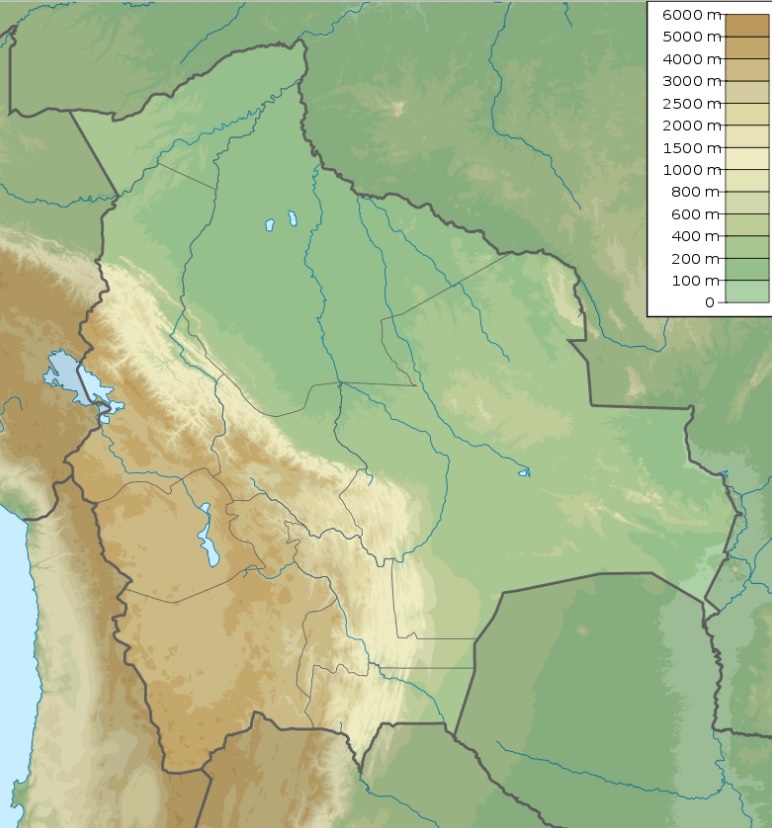Gigantic 1994 Bolivian earthquake buried mountains 660 km under our feet

The majority of the schoolchildren learn that the Earth has three or four layers – a crust, mantle and core – which is sometimes subdivided into an inner and outer core. That's not wrong, but it does leave out several other layers that scientists have identified within the Earth, including the transition zone within the mantle.
In a study published this week in Science, Princeton geophysicists Jessica Irving and Wenbo Wu, in collaboration with Sidao Ni from the Institute of Geodesy and Geophysics in China, used data from an enormous earthquake in Bolivia to find mountains and other topography on the base of the transition zone, a layer 660 kilometers (410 miles) straight down that separates the upper and lower mantle. (Lacking a formal name for this layer, the researchers simply call it "the 660-km boundary.")
To peer deep into the Earth, scientists use the most powerful waves on the planet, which are generated by massive earthquakes. "You want a big, deep earthquake to get the whole planet to shake," said Irving, an assistant professor of geosciences.
Big earthquakes are vastly more powerful than small ones -- energy increases 30-fold with every step up the Richter scale -- and deep earthquakes, "instead of frittering away their energy in the crust, can get the whole mantle going," Irving said. She gets her best data from earthquakes that are magnitude 7.0 or higher, she said, as the shockwaves they send out in all directions can travel through the core to the other side of the planet -- and back again. For this study, the key data came from waves picked up after a magnitude 8.2 earthquake -- the second-largest deep earthquake ever recorded -- that shook Bolivia in 1994.
"Earthquakes this big don't come along very often," she said. "We're lucky now that we have so many more seismometers than we did even 20 years ago. Seismology is a different field than it was 20 years ago, between instruments and computational resources."
Seismologists and data scientists use powerful computers, including Princeton's Tiger supercomputer cluster, to simulate the complicated behavior of scattering waves in the deep Earth.
The technology depends on a fundamental property of waves: their ability to bend and bounce. Just as light waves can bounce (reflect) off a mirror or bend (refract) when passing through a prism, earthquake waves travel straight through homogenous rocks but reflect or refract when they encounter any boundary or roughness.
"We know that almost all objects have surface roughness and therefore scatter light," said Wu, the lead author on the new paper, who just completed his geosciences Ph.D. and is now a postdoctoral researcher at the California Institute of Technology. "That's why we can see these objects -- the scattering waves carry the information about the surface's roughness. In this study, we investigated scattered seismic waves travelling inside the Earth to constrain the roughness of the Earth's 660-km boundary."
The researchers were surprised by just how rough that boundary is -- rougher than the surface layer that we all live on. "In other words, stronger topography than the Rocky Mountains or the Appalachians is present at the 660-km boundary," said Wu. Their statistical model didn't allow for precise height determinations, but there's a chance that these mountains are bigger than anything on the surface of the Earth. The roughness wasn't equally distributed, either; just as the crust's surface has smooth ocean floors and massive mountains, the 660-km boundary has rough areas and smooth patches. The researchers also examined a layer 410 kilometers (255 miles) down, at the top of the mid-mantle "transition zone," and they did not find similar roughness.
"They find that Earth's deep layers are just as complicated as what we observe at the surface," said seismologist Christine Houser, an assistant professor at the Tokyo Institute of Technology who was not involved in this research. "To find 2-mile (1-3 km) elevation changes on a boundary that is over 400 miles (660 km) deep using waves that travel through the entire Earth and back is an inspiring feat. ... Their findings suggest that as earthquakes occur and seismic instruments become more sophisticated and expand into new areas, we will continue to detect new small-scale signals which reveal new properties of Earth's layers."
- READ MORE ON:
- Bolivian earthquake
- Bolivia
- Bolivian earthquake 1994
- mountains










